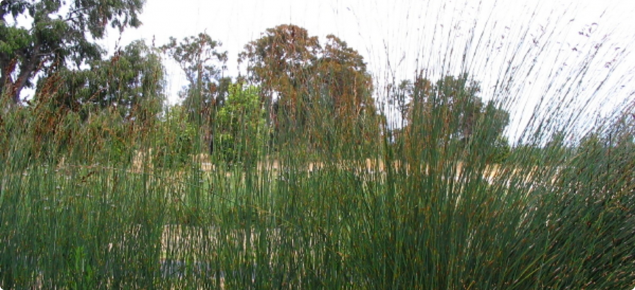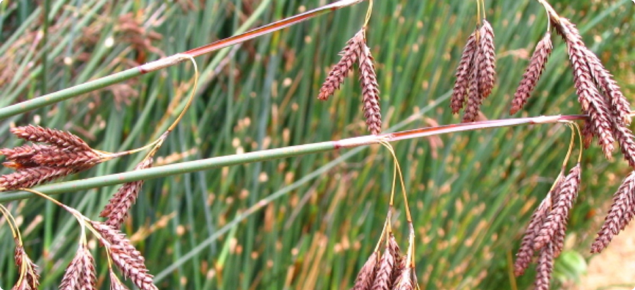Form: grass — perennial
Status: not present in WA
Thatching reed is native to South Africa. A very resilient plant that will tolerate drought (once established), frost and coastal seaside conditions. Although it prefers acidic soil it will grow in almost any soil as long as it drains well.
Appearance
Thatching reed is a tall, grass or reed-like tussock with a diameter of 0.5-1 metre at the base and a spread.
Stems: Dark-green stiff upright stems forming a fan shape.
Flowers: Stems are topped with brown to golden brush-like flowers in summer.
Seeds: The seed comes in the form of a tiny nutlet inside the old flower, which forms two small wings when mature and allowing wind dispersion. The seeds are produced in very large quantities by each female plant, but are not all viable; a large number of nutlets are empty inside.
Agriculture and economic impact
Could invade crops and pastures where it would be difficult to control. Likely to invade wetlands.
Declared pest category
The Western Australian Organism List (WAOL) contains information on the area(s) in which this pest is declared and the control and keeping categories to which it has been assigned in Western Australia (WA). Search for thatching reed in the WAOL using the scientific name Thamnochortus insignis.
Requirements for land owners/occupiers and other persons
Requirements for land owners/occupiers and other persons if this pest is found can be sourced through the declared plant requirements link.
Search > detect > report
| MyPestGuide™ Reporter | Pest and Disease Information Service (PaDIS) |
Control method
There is no information on control, although glyphosate would be a good option.


